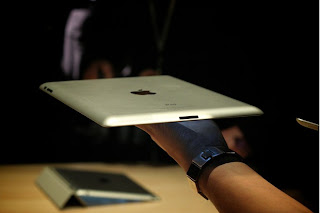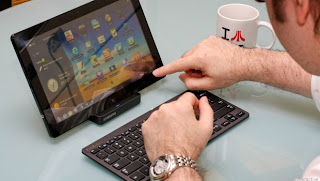Longtime Google executive Marissa Mayer will become CEO of Yahoo, thrusting the prominent 37-year-old executive into a public highwire act as she tries to turn around the languishing company.
Mayer's eagerness aside, the move is a gamble for her. Employee number 20 at Google, Mayer became a key executive at the company, overseeing search products and user interface for five years and eventually taking over local and location services. In 2010, she ascended to Google's elite operating committee.
Mayer's personal wealth from pre-IPO Google stock has allowed her to buy a penthouse in San Francisco's Four Seasons along with a home in well-to-do Palo Alto and a posh Vogue wedding. There's little doubt she could remain at Google, or quit conventional work entirely, and live in considerable comfort. She doesn't need to try and revive Yahoo.
"Marissa has been a tireless champion of our users," Google CEO Larry Page writes. "We will miss her talents at Google."
By the end of 2011 Mayer's influence seemed to be waning. She was among several executives pushed out of the operating committee, Reuters reported, and wasn't visible at Google I/O this past June despite having keynoted in prior years.
Still, it's likely Mayer could have continued to make significant contributions at Google if she'd chosen to hang in. Her oversight of local put Mayer in charge of a crucial crossroads for Google.
At Yahoo, Mayer is rolling the dice on a much more daunting challenge. The company's C-suite has been a revolving door and Yahoo has bled top talent.
"Marissa has the energy and drive Yahoo needs," says YCombinator's Paul Buchheit, who worked closely with Mayer during the creation of Google's Gmail. "I can't wait to see what she does with the company."
A former Yahoo executive who left the company in recent years says Mayer will have to move quickly to repair Yahoo's reputation and bolster its flagging momentum. "Her joining Yahoo! is like a bomb," this person says. "The 'shock and awe' will briefly destabilise the legacy elements and parties that have been holding the company back. She needs to use her first 100 days aggressively to confront entrenched interests."
Mayer's ascent is a sign that Yahoo will compete aggressively on technology development rather than retreating into becoming an online media company that merely sells advertising, says Morningstar analyst Rick Summer. That means going up against formidable competitors like Microsoft, Facebook -- and Mayer's former employer.
"Yahoo has had declining use in its communications services and not much mobile success," says Summer. "It is the polar opposite from Google... She'll need to lead a team that creates a few strong technology products that will engage users and stem the loss in Yahoo's search business."
Mayer certainly has the chops to lead tech product development. She helped oversee the development of Gmail, Google News and Google Images. She has a master's degree in computer science from Stanford and is famous for her data-driven approach to product decisions.
But in other ways the job will be an odd fit. For one, Mayer has no real professional experience outside of her six different jobs at Google, a sort of parallel corporate universe where the gusher of profits from contextual advertising has subsidised virtually all of the company's operations for more than a decade.
Also, Yahoo has for the past decade operated not like Google, which is obsessed with software development, but as a sort of media company. Since Terry Semel took the reins in 2001, Yahoo's leadership has focused on advertising and marketing initiatives over technical advancement (with the possible exception of Jerry Yang's brief stint as CEO). In 2009, Yahoo ceded its once-core search engine to Microsoft, whose servers began powering Yahoo searches.
Restarting Yahoo tech development might have great long-term potential, but in the meantime it's relatively low-tech display ads that keep the lights on at Yahoo. Mayer will need help to keep that lifeline strong.
If she does pull off an unlikely turnaround, of course, Mayer's reputation in Silicon Valley will be sterling. She'll join turnaround gods like Steve Jobs at Apple and Louis Gerstner at IBM in the top tier of tech's pantheon.
Former Yahoo employees say Mayer needs to get climbing now if she'll ever reach those heights.
"It's not like she needs the money," one wrote in a closed Facebook group for Yahoo alumni. "She has to honestly feel like she can turn this ship around after it's already hit the iceberg, which is a pretty monumental challenge."












